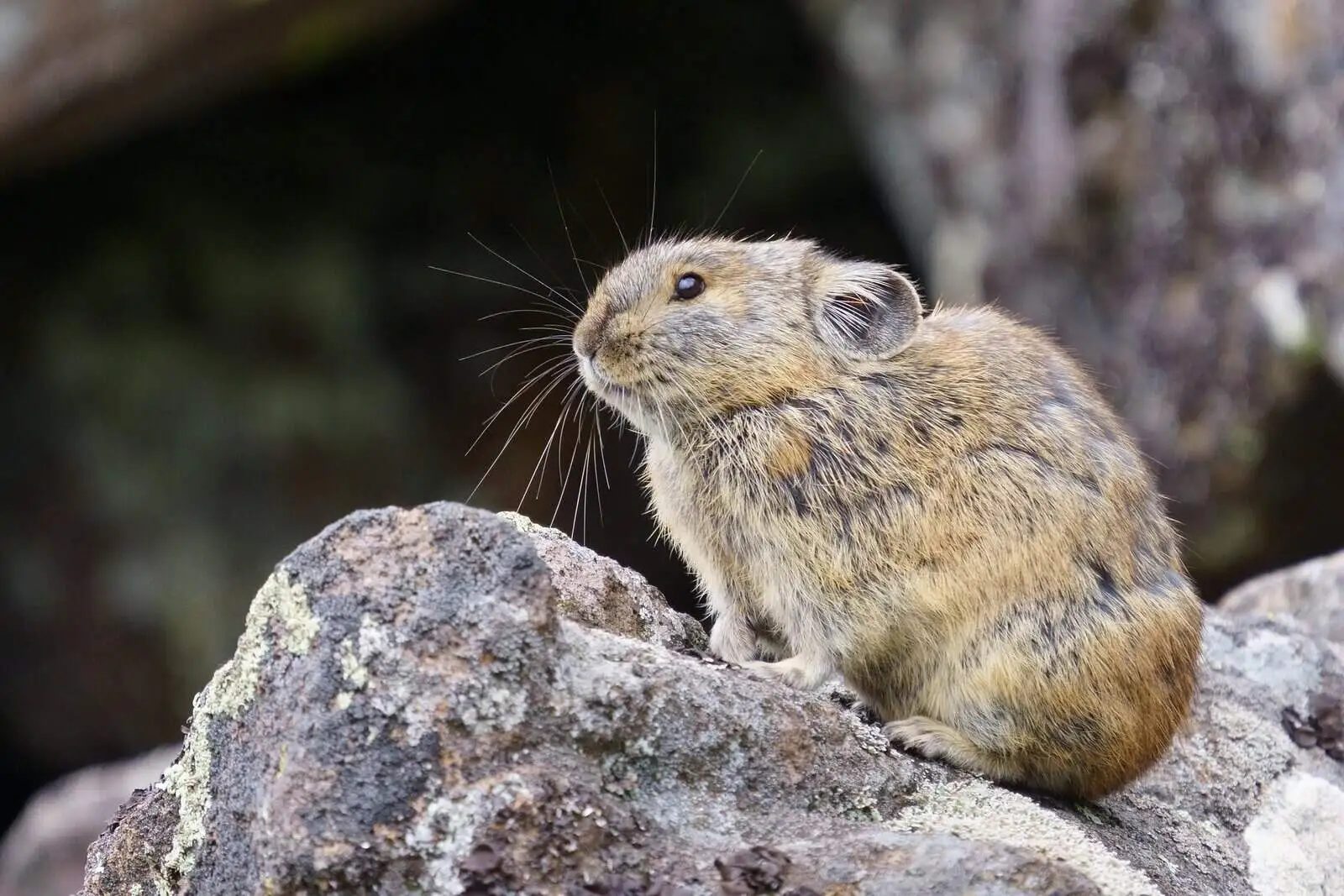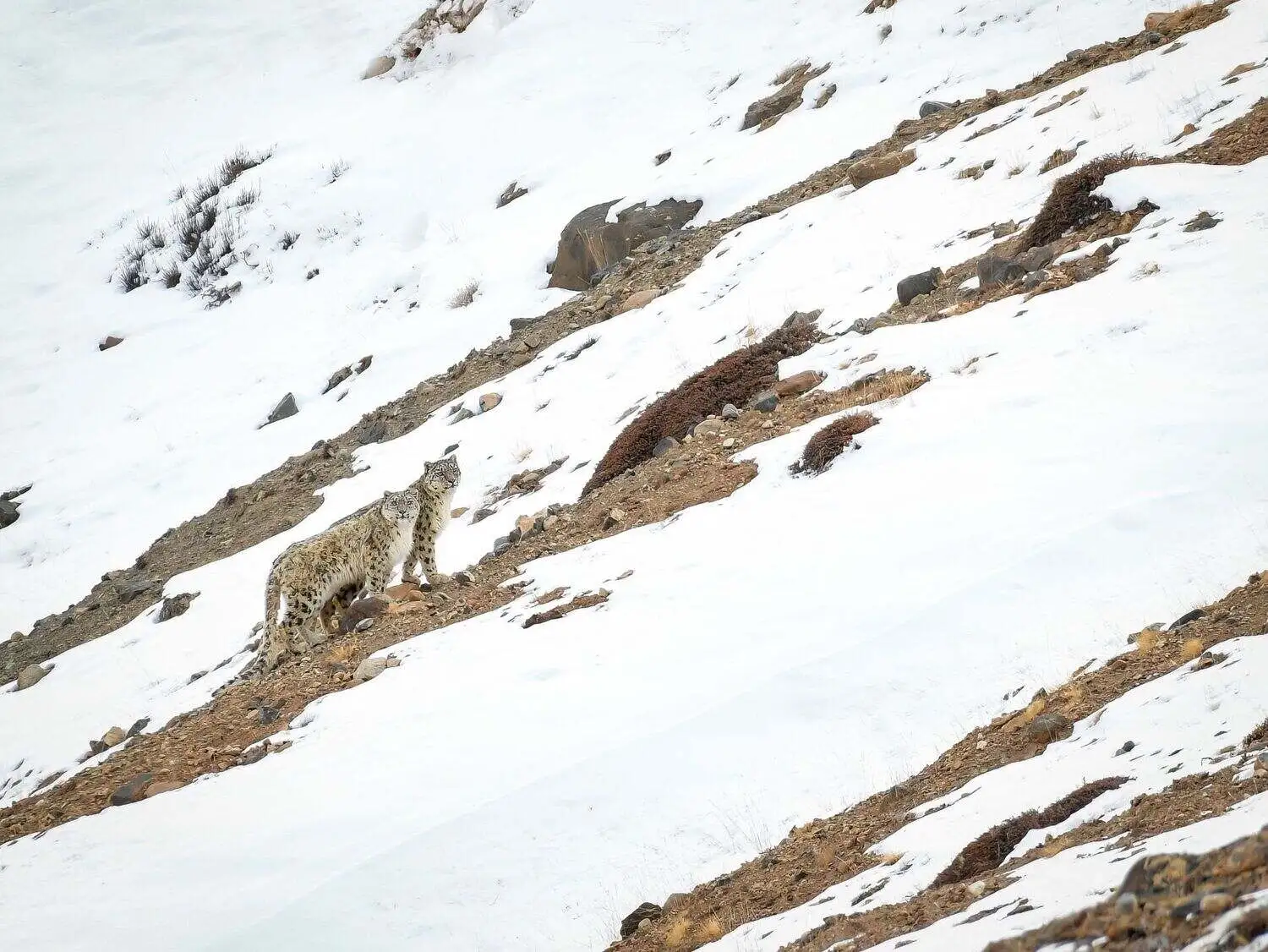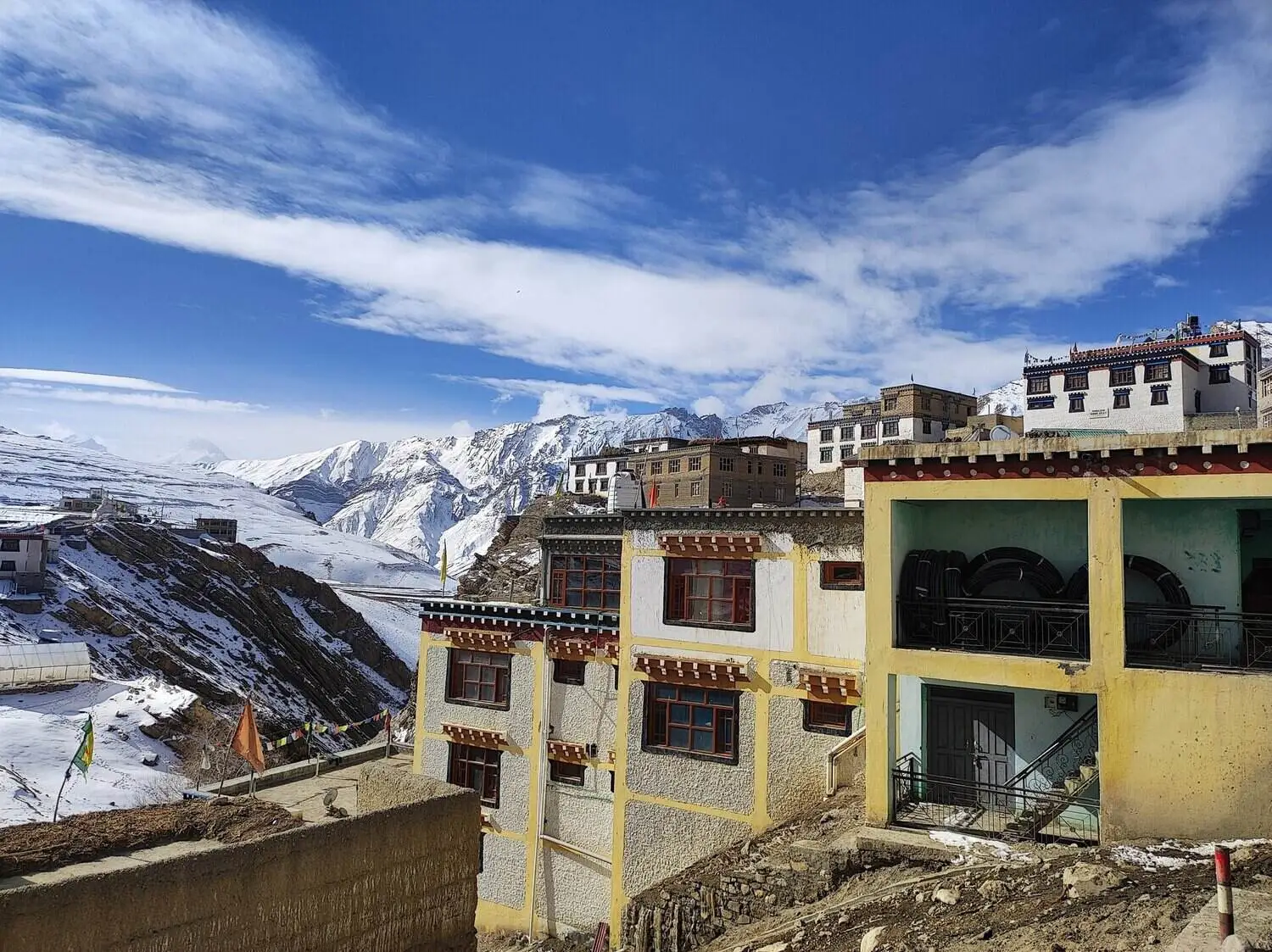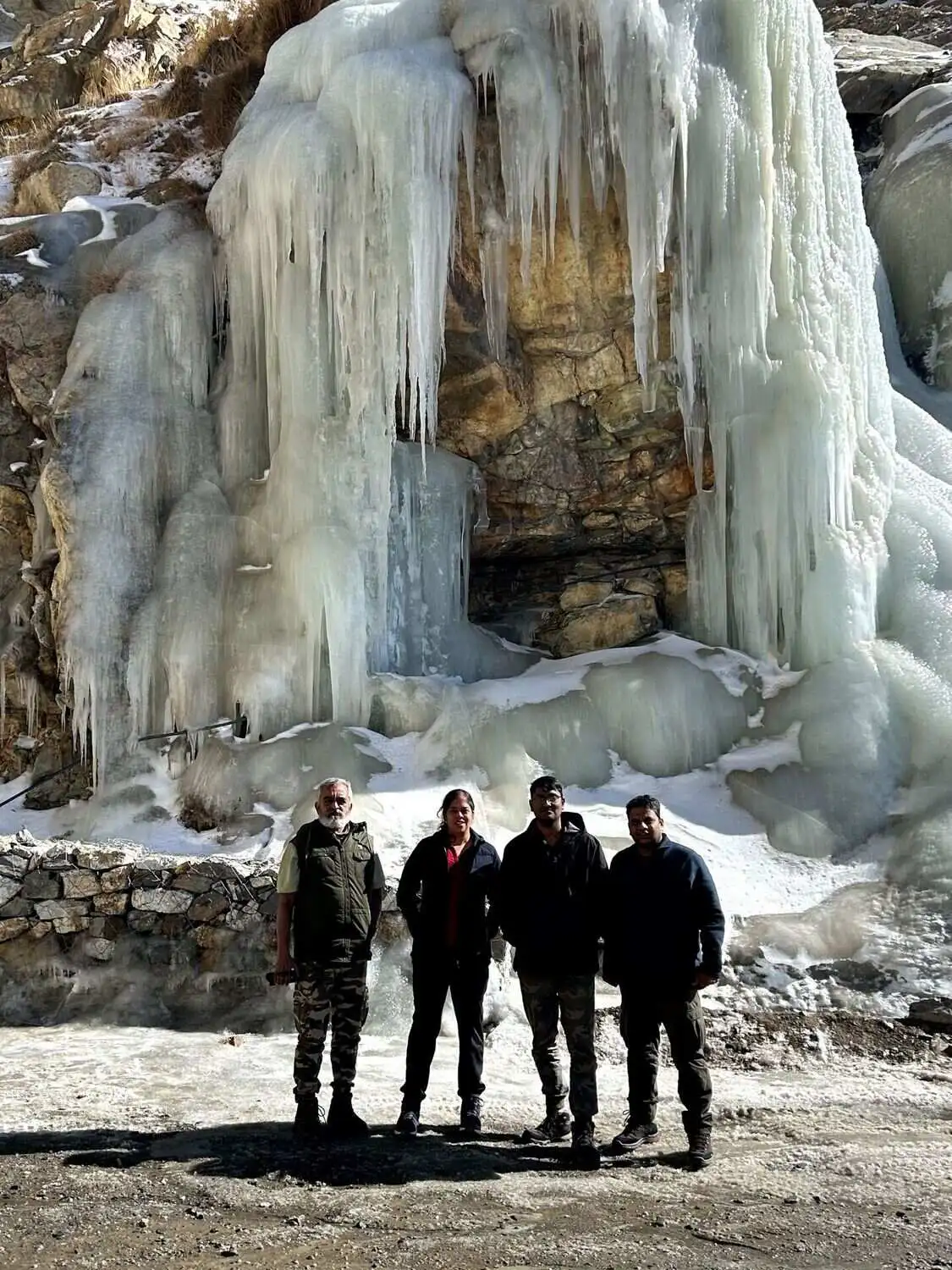The Pika is a small, rabbit-like creature that thrives in the rugged, rocky landscapes of the Himalayas. With its short limbs, round ears, and quick movements, the pika is perfectly adapted to its rocky home. Despite its resemblance to a rabbit, it belongs to the Ochotonidae family and plays an essential role in maintaining the delicate balance of the alpine ecosystem.
Meet the Pika
Pikas are small mammals, usually about the size of a rabbit, but with a more compact build and no visible tail. Their fluffy fur and rounded ears make them endearing to anyone lucky enough to spot them in their natural environment. These creatures are herbivores, foraging for grasses, herbs, and mosses. Pikas are often found in rocky, high-altitude areas where they create nests and store food to survive the harsh winters.
Quick Facts About the Pika
| Feature | Details |
|---|---|
| Scientific Name | Ochotona roylei |
| Size | 20–25 cm (8–10 inches) |
| Weight | 150–250 grams |
| Diet | Herbivorous (grasses, herbs, moss) |
| Habitat | Rocky alpine meadows, scree slopes |
| Lifespan | 3–6 years |
| Conservation Status | Least Concern (IUCN) |
Where Pikas Live
Pikas prefer the rocky, boulder-strewn meadows and scree slopes that are characteristic of the Himalayan region. They are typically found at altitudes ranging from 2,500 to 5,000 meters (8,200 to 16,500 feet). Their habitat offers them plenty of cover from predators and allows them to forage and gather plant material for winter storage. Pikas are most commonly found in places like the Tibetan Plateau, northern India, Nepal, and Bhutan.
The Life of a Pika
The pika is a solitary and territorial animal. It spends its days hopping across rocks, collecting plants, and storing food in its burrow or among the rocks. They are incredibly agile and can easily navigate the rocky terrain. When winter approaches, pikas rely on the food they have stored in the summer to survive, as they do not hibernate.
Pikas are also highly vocal and communicate with a series of sharp calls to alert others of potential dangers. They are quick to retreat into the safety of the rocks at the slightest sign of a predator, such as a hawk or a fox.
What Pikas Eat
Pikas are herbivores, primarily feeding on a diet of grasses, mosses, and herbs. They are known to gather food during the warmer months and create large food stores, often referred to as “haypiles.” These piles of dried vegetation help them survive through the long winter months when fresh food is scarce. Their foraging behavior plays a significant role in maintaining plant diversity in their ecosystem, as they help control plant growth by eating certain species.
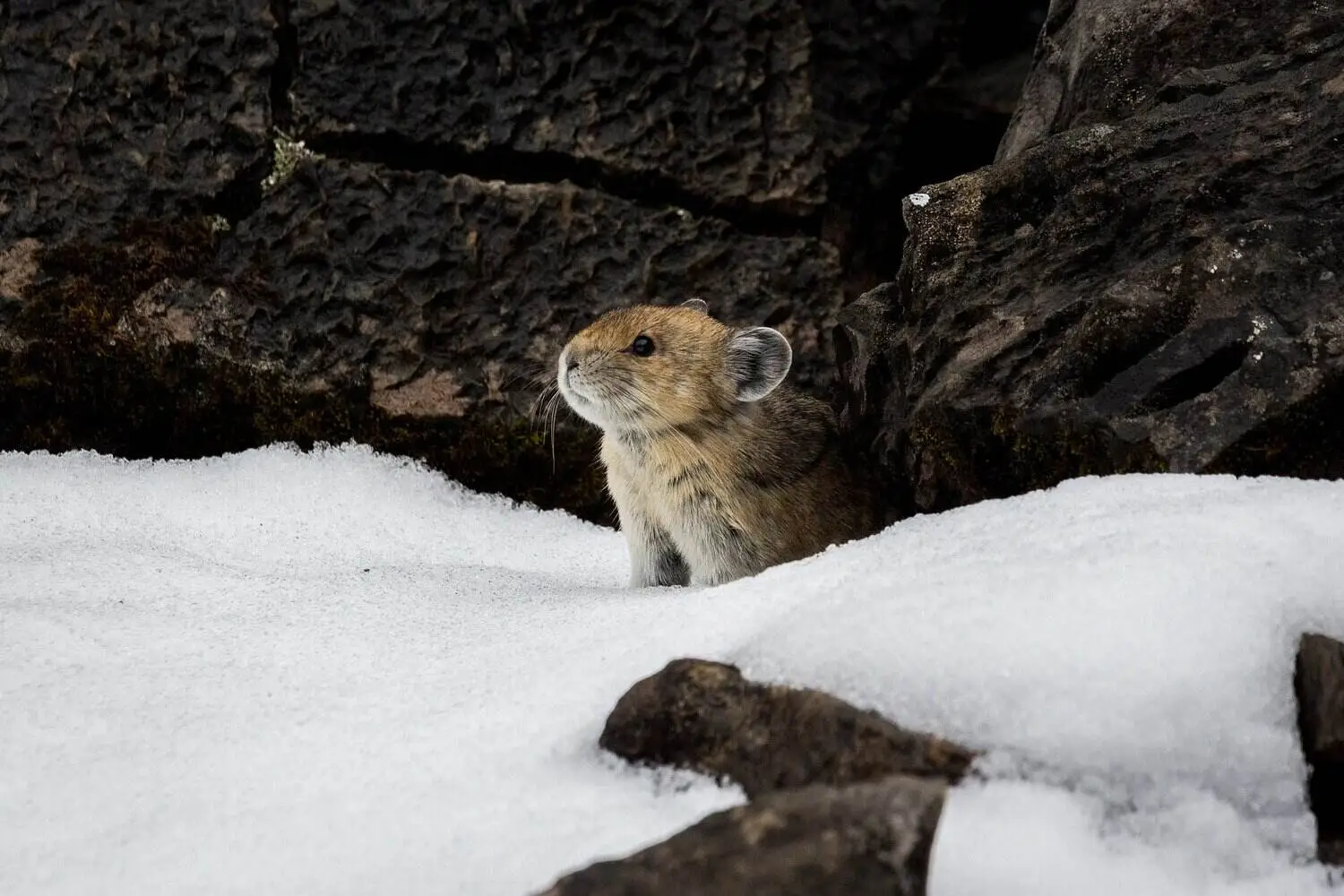
Role in the Ecosystem
Pikas play an essential role in their ecosystem. By foraging on various plants, they help to manage plant populations, preventing any one species from becoming overly dominant. Additionally, they serve as a vital food source for predators like hawks, weasels, and even larger mammals such as foxes. Pikas are also known to be important indicators of climate change. Due to their sensitivity to rising temperatures, changes in pika populations can signal shifts in the health of the broader environment.
Threats and Conservation
While pikas are currently classified as a species of “Least Concern” by the IUCN, they face significant threats. Rising temperatures due to climate change are altering the alpine habitats that pikas rely on, pushing them to higher altitudes and reducing the availability of food. Additionally, habitat fragmentation due to human activities, such as infrastructure development and tourism, poses a risk to their survival.
Conservation efforts are focused on protecting pika habitats, particularly in the face of climate change. Ensuring the preservation of the Himalayan ecosystem is crucial for maintaining healthy pika populations and the balance of the region’s biodiversity.
Some fun facts about the pika
- Pikas are incredibly agile, able to hop across rocks with ease and navigate rugged terrain.
- Despite their rabbit-like appearance, pikas are not closely related to rabbits, they belong to a separate family called Ochotonidae.
- Pikas are highly vocal and use sharp, high-pitched calls to warn their colonies of potential danger.
- Pikas are active throughout the day, foraging for food in the morning and evening.
- They create “haypiles” to store food for the winter months, as they do not hibernate.
- Pikas play a crucial role in maintaining plant diversity by foraging on a variety of vegetation.
- Due to their sensitivity to climate change, pika populations are closely monitored as indicators of environmental health.
How to Spot a Pika on Your Safari
If you’re trekking in the Himalayan region, spotting a pika is a treat. These elusive creatures are often seen darting between rocks and shrubs, especially during the early morning and late afternoon.
To spot one, look for small, round animals with large ears and a short body, often perched on rocks or running quickly across boulders.
Protecting Himalayan Biodiversity
The Himalayan pika is just one of many amazing species living in these fragile mountain ecosystems. Protecting their habitat is key to keeping this rich biodiversity alive. By supporting responsible tourism and ongoing conservation efforts, we help ensure the pika and countless other high-altitude species can continue to thrive for years to come.

